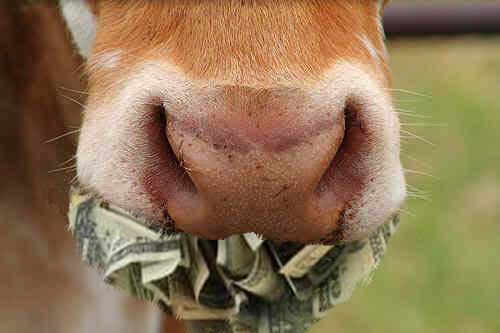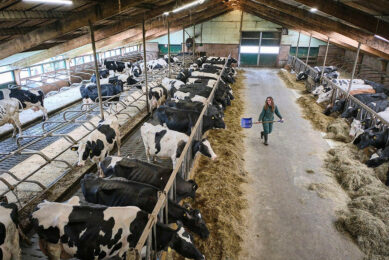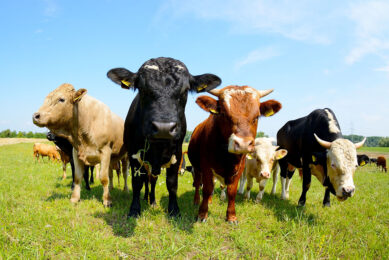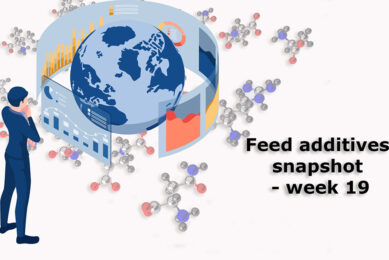Cattlemen feeling the pinch of increased feed costs

Despite what appears to be a more bountiful harvest compared to last year, cattle farmers are continuing to experience the pinch of elevated feed costs. Hay prices have remained at record levels, corn co-product feeds have been slow to lower in price, and land values and pasture rents are still elevated, according to a University of Illinois beef extension educator.
Meteer reported that hay prices have stayed at record levels because of depleted inventories due to last year’s drought, winter-kill issues in early 2013, and a slow start to the haying season due to a wet spring. Competition for acreage from corn and soybeans has also contributed to expensive forage costs. It is evident that forage prices will remain elevated into 2014, and cattlemen need to be looking to alternative forages. Nearby cornfields can offer the most economical alternative to high-priced forage.
“The best way to use a harvested cornfield is to allow cattle to graze it,” Meteer said. “Cattle graze selectively, looking for the more palatable feedstuffs. In the case of cornstalk grazing, the more palatable parts of the plant are also more nutritious. Cattle first eat the remaining corn grain, then husks, then leaves, and finally the stalk.”
The cost of grazing cornstalks is low first because the cows graze and harvest their own feed, and second, because all costs to produce the plant for grain production are attributed to the row-crop operation. According to Meteer, even with the cost of a temporary fence (which many farmers already have) and water, grazing cornstalks is more economical than feeding high-priced hay.
“Cattle will eat the more digestible and higher-protein portions first,” Meteer said. “Therefore, a good mineral is probably the only supplementation needed for the first month unless the herd includes fall-calving cows or stocker calves. For them, a supplement will be necessary to meet nutrient demands of lactation and growth, respectively.”
Grazing stalks can also benefit subsequent crops. Cows grazing cornstalks for 60 days will remove approximately 30 to 40% of the residue, Meteer said. Residue buildup has been a well-documented problem in many corn-on-corn fields with new hybrids. Cows deposit nutrients in the form of manure back on the field. As they graze, they reduce volunteer corn, considered a weed and a yield robber in soybean fields.
Healthier corn plants compared to 2012 should yield a good amount of residue available for harvest. Using an equation developed at the University of Nebraska, a field that averages 150 bushels per acre yields 2,162 pounds of leaf and husk. Only 50 percent of the 2,162 pounds is available for the animal; the rest is trampled or lost in weathering. Thus, 1,081 pounds of dry matter husk and leaf per acre are available as feed.
A 1,300-pound cow consumes 884 pounds of dry matter per month. At 150 bushels an acre, approximately one acre of cornstalks is needed to feed the cow for 30 days. To feed the same cow on cornstalks for 60 days, 1.5 to 2 acres would be needed.
“Producers should scout fields for ear drop or downed corn areas,” Meteer said. “A significant amount of grain loss in fields can cause acidosis or founder in animals. Fields with these areas will need careful management via strip grazing or completely fencing the problem areas out.
“Many newer combines are equipped with mowers on the head to reduce residue buildup. If you plan to graze the cornstalks, it is recommended to turn the mowers off. Mowing reduces particle size and speeds up degradation of the cornstalk. Mowed residue will break down faster; thus, less will be available for animals after a few weeks,” he said.
University of Illinois Extension provides equal opportunities in programmes and employment. If you need a reasonable accommodation to participate in any of our programmes, please contact your local county extension office.
The University of Illinois Extension










